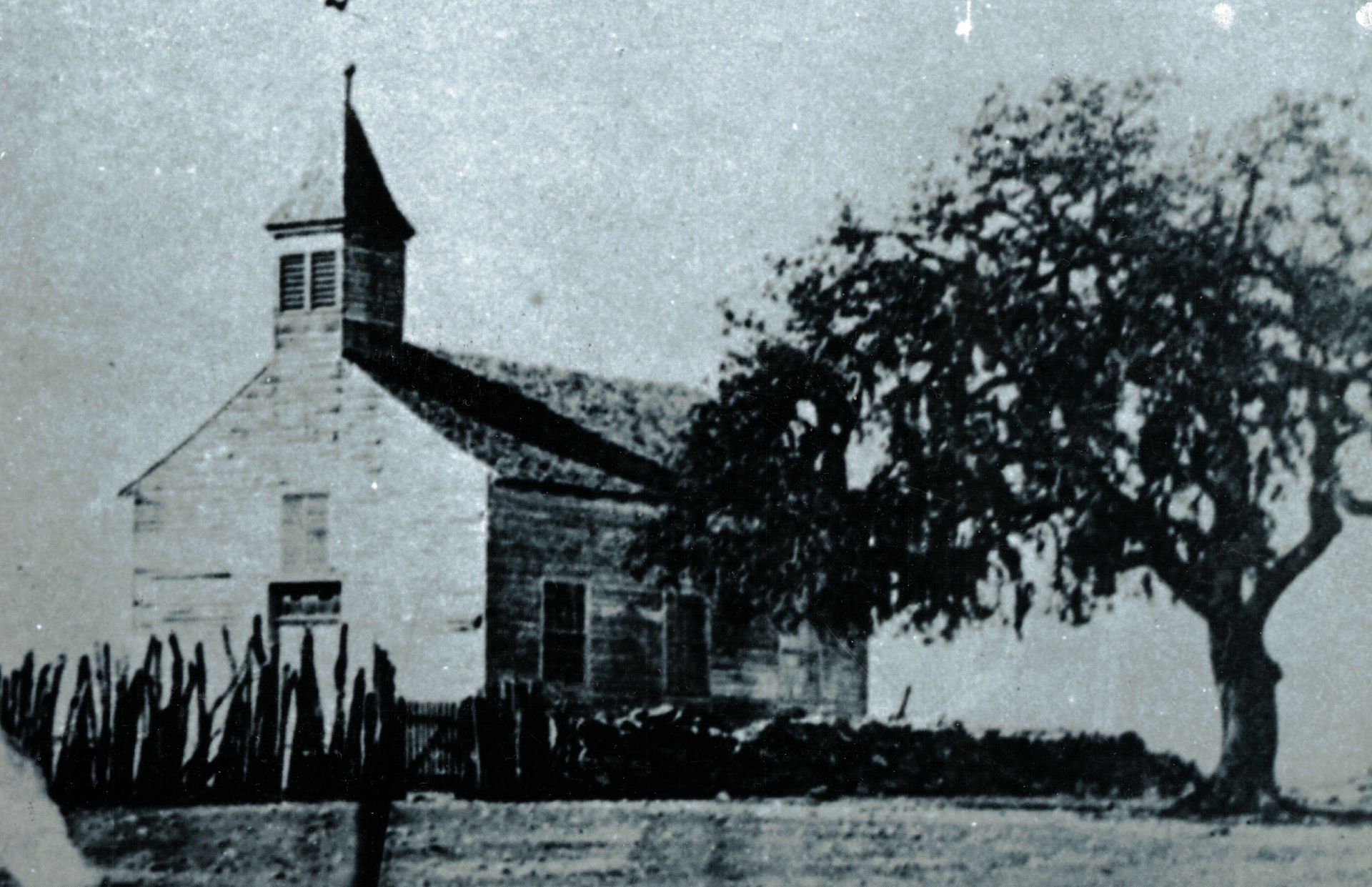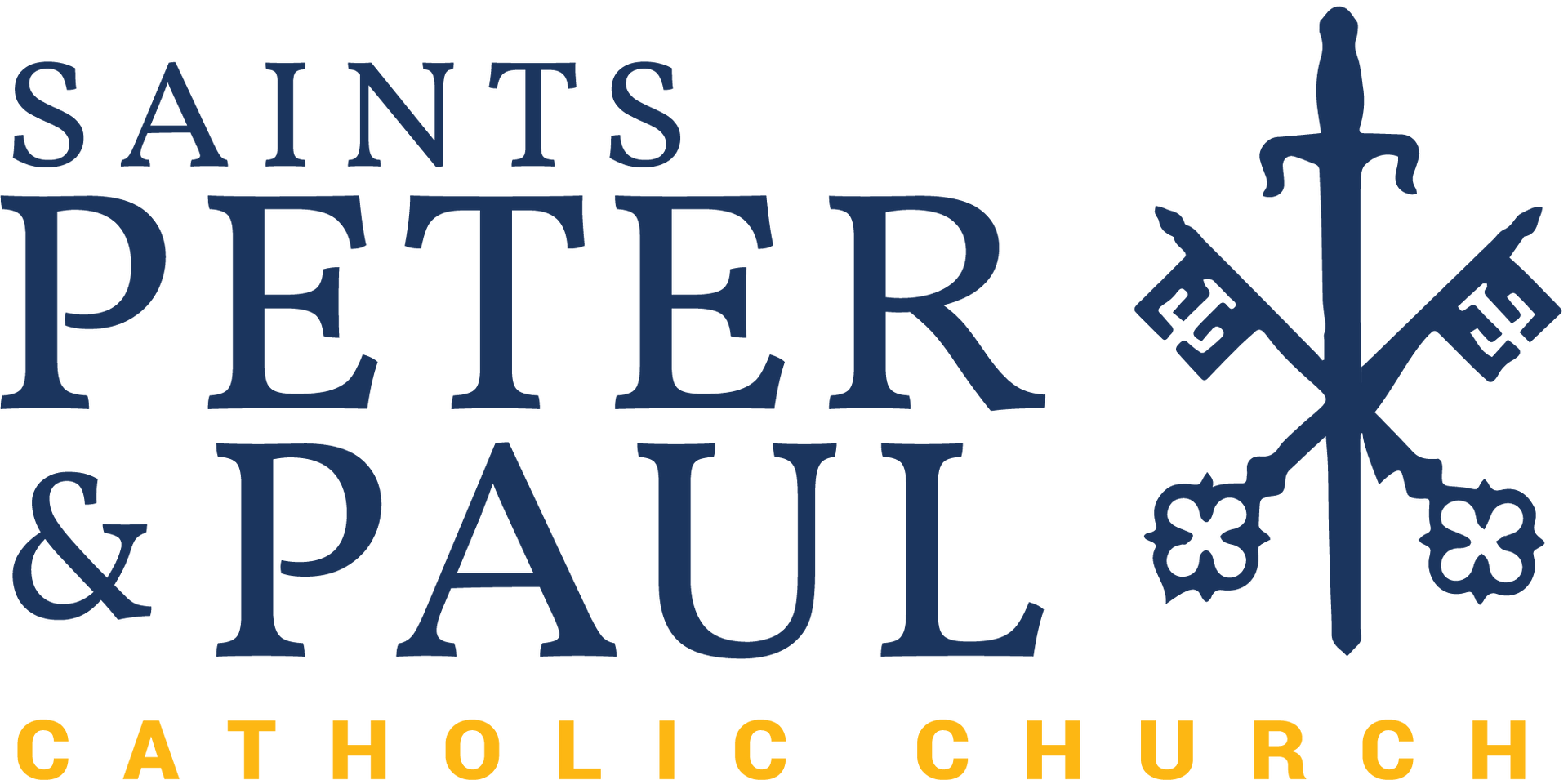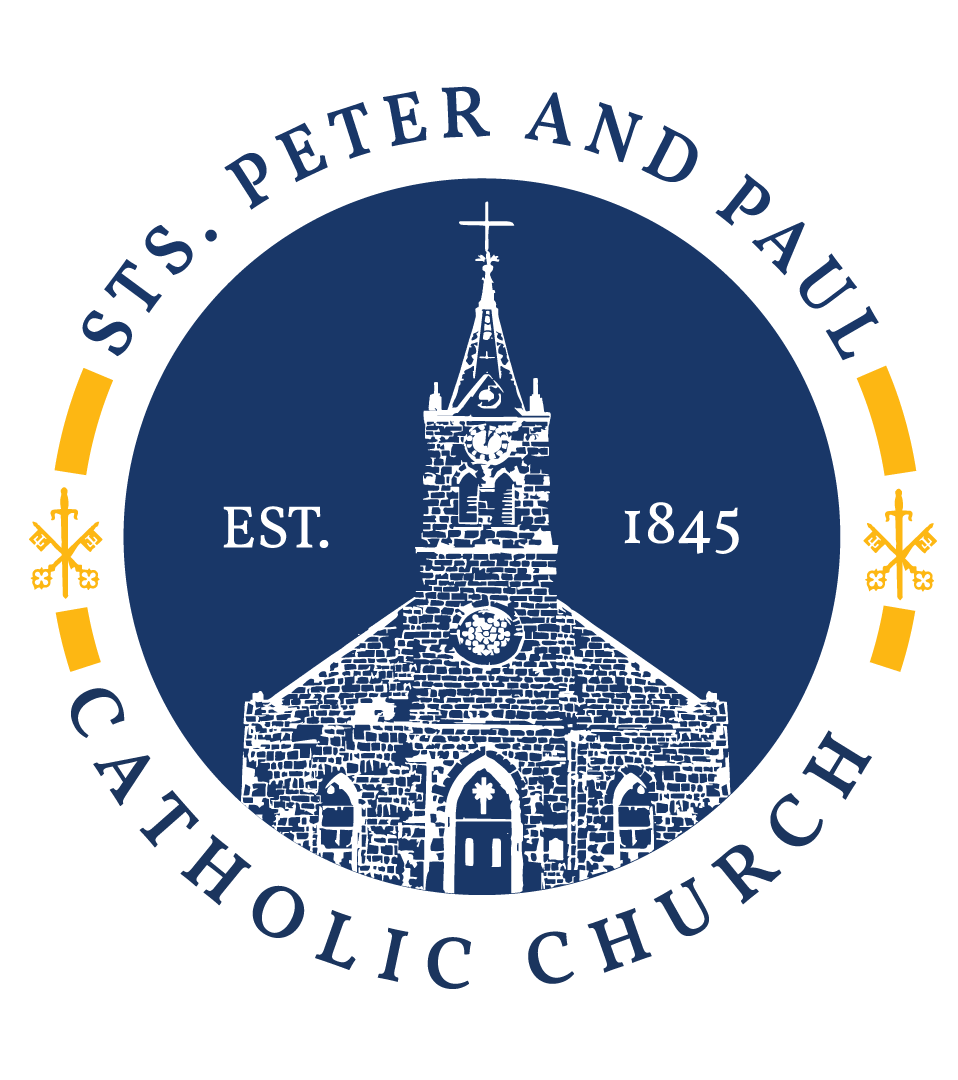Our Story
A Pioneer Parish in Texas
Saints Peter and Paul
The seeds of our parish began when 85 immigrants stepped onto the Republic of Texas soil in 1844. Under German leadership, they were seeking to create a new life in the western part of the young Republic. Naïveté among their leaders forced a change in plans and they settled (temporally, they thought) on the banks of the Guadalupe River near the crossing of the Nacogdoches Road.
Prince Solms was under orders to establish two churches in the new settlement … a Protestant Church and a Catholic Church. While on the coast, he found a preacher, Rev. Ervendberg, whom he enlisted for his Protestant component. Finding a Catholic priest was much more difficult. Solms had already visited the Redemptorist priests in Baltimore and the Jesuits in Louisiana seeking help, but none were available.
When he had arrived in Galveston, he immediately sought out Bishop Odin of the newly formed Vicariate Apostolic of Texas (it had not yet been elevated to a diocese). Odin tried, against all odds, to locate a priest for his “German Catholics”. There were less than a dozen priests in all of the Republic and several newly arrived priests died in the cholera or fell to other tragedies in the area.
After Solms had settled his Germans in what became known as New Braunfels, Odin arranged for “saddle-bag priests” to attend to our needs here. In 1849, our first pastor, Gottfried Menzel, arrived and our parish was officially incorporated. The three parishes in central Texas at the time were San Fernando in San Antonio, St. Louis in Castroville and our St. Peter in New Braunfels. Fr. Menzel wrote to a friend in 1850 that he was the “only priest” in all of West Texas as he lived in New Braunfels!
In the 1850s, Bishop Odin worked hard to get the Conventual Franciscans to come to Texas from Europe to take over his “German parishes”. At the end of the decade, he traveled to Latrobe, Pennsylvania, to seek the help of the Benedictines for the same parishes.
From 1869 to today, the parish has been blessed with Diocesan Clergy who have brought the parish to a modern, multi-cultural Christ-centered entity with ministries that serve the area with full Vatican II spirit. Little did those immigrants in 1844, who stepped off the ships with names as Arnold, Fey, Klein, Lux, Mergele, Reininger, Riedel, Schertz, Schneider, Schwab, Syring, and Wenzel realize what they would help start in Texas. The cornerstone of our current stone church was laid in 1871 and has gone through two expansions, 1963 and 2000. From the small beginning our church has grown to over 4500 registered families today.
May the impetuousness of Peter and the fiery drive of Paul, under the guidance of the Divine Providence, continue to lead our parish for our third century of witnessing to God’s Word!
2021
This is a photo of our grotto taken in 2021 when it was 100 years old. It remains a peaceful place to offer prayers and thanks to our Blessed Mother. Candles can be lit for special intentions.
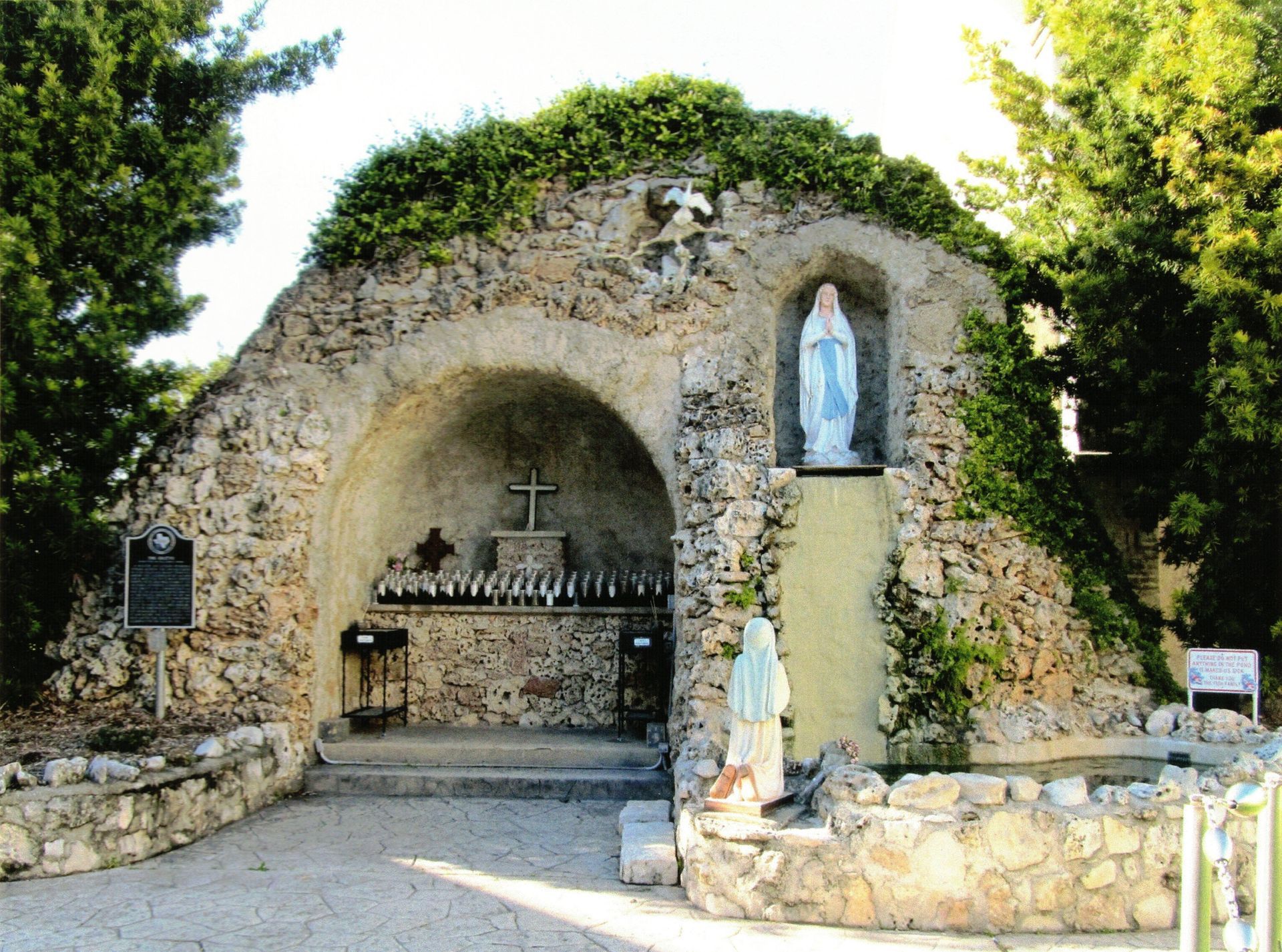
1963
This is a photo taken of our church in 1963 immediately after it was remodeled and enlarged. The interior was decorated in shades of beige and brown, and the altars and baptismal font were of green and white Italian marble. White marble was used for the Communion rail, lectern, and candlesticks. This was before Vatican II and the priest would still say Mass facing away from the people – at this time the current front altar was not yet installed. At this time the cry room was to the left behind the row of windows to the left of St. Mary’s altar. The baptismal font was located in the cry room which was actually a fairly large room. The statues of St. Peter and St. Paul that are to the left and right of the altar are the ones that are in our church today at the corners where the wings (transept) of the church break off from the nave (main body).
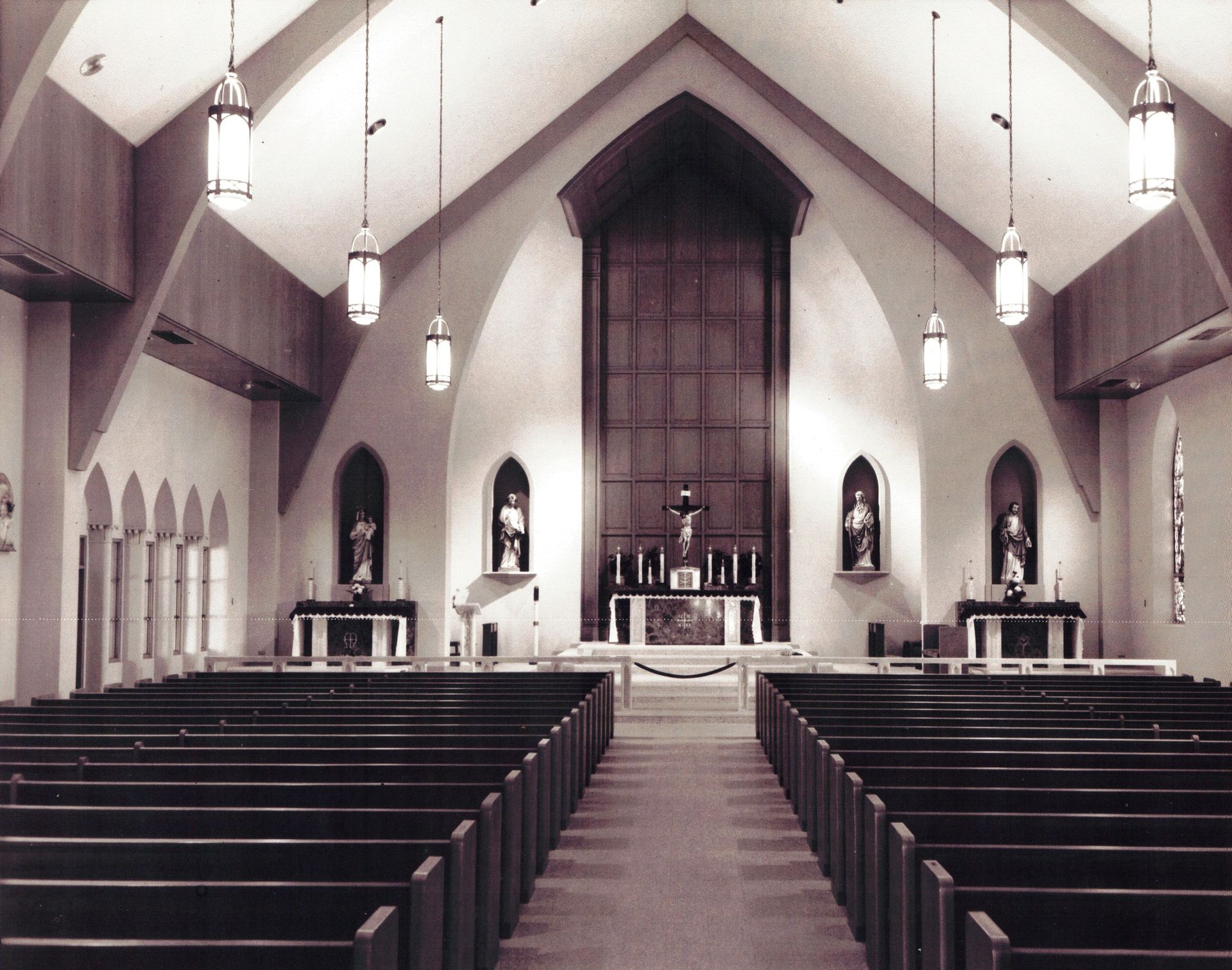
1949
This photo of the rectory dates to May 13, 1949. Our rectory, the home for our resident priests, was built in 1895, and was recently renovated in 2020-2021, although it had seen some other alterations over the years. At one point the parish office was located in the rectory as well as being the home for the priests.
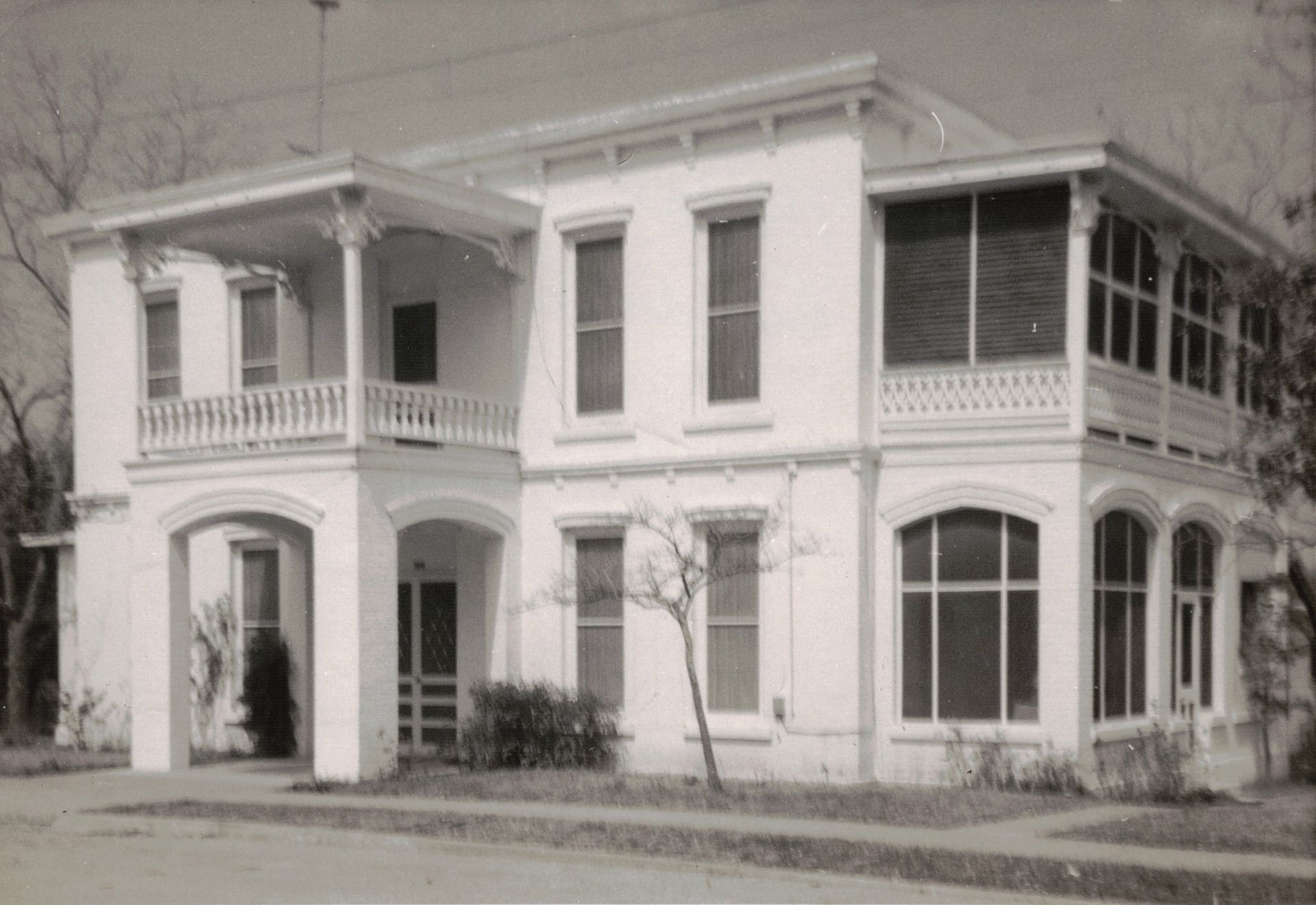
1940's
This photo was taken in the 1940s and is of the choir loft showing one of our early pipe organs. Note that at this time the spiral staircase was on the rectory side of the church. It was later moved to the opposite side where it is now. Also note the banner that is hanging under the loft which is composed of stars in the shape of a cross. The stars represent all the servicemen from our parish who went to fight for our country in World War II. The stars are mostly blue except for a few which are gold representing those men who did not return home.

1921
This is a photo of the grotto taken on June 29, 1921, the day it was dedicated (Feast Day of St. Peter and St. Paul). In 1918 and 1919 a major influenza pandemic spread across the globe killing between 50 and 100 million people. Approximately one-third of the world’s population at the time were infected (500 million). Comal County and New Braunfels were hit equally hard. Between September 24, 1918 and May 10, 1919 our parish death records directly attribute at least 45 deaths to the pandemic. Our pastor at the time, Fr. JMJ Wack, originally from Lorraine, France, who served our parish from 1889 to 1923, led the parishioners in making a solemn vow in which they promised the Blessed Mother to build a grotto, a replica of the grotto in Lourdes, France, if there would be no more deaths in the parish from the pandemic. Their petition was granted – not another parishioner died from the disease after the vow was made. In fulfillment of the vow, Fr. Wack traveled to Lourdes around 1920 to obtain the exact specification for the grotto. Work was completed in June of 1921.
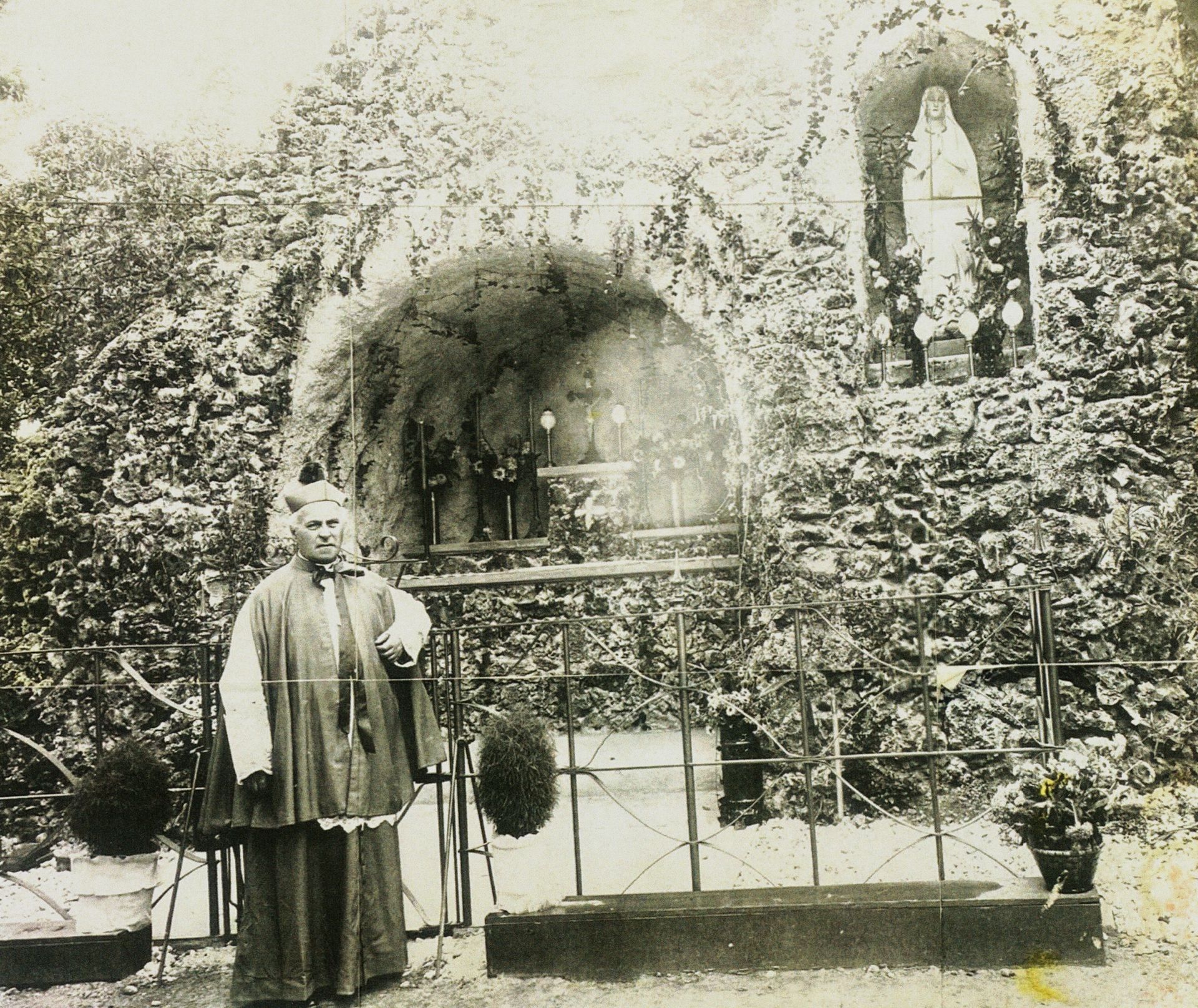
1921
This photo is of St. Mary’s altar and was taken in the Spring of 1921. Note the intricate detailing on the wooden altar and the beautiful painting on the wall.
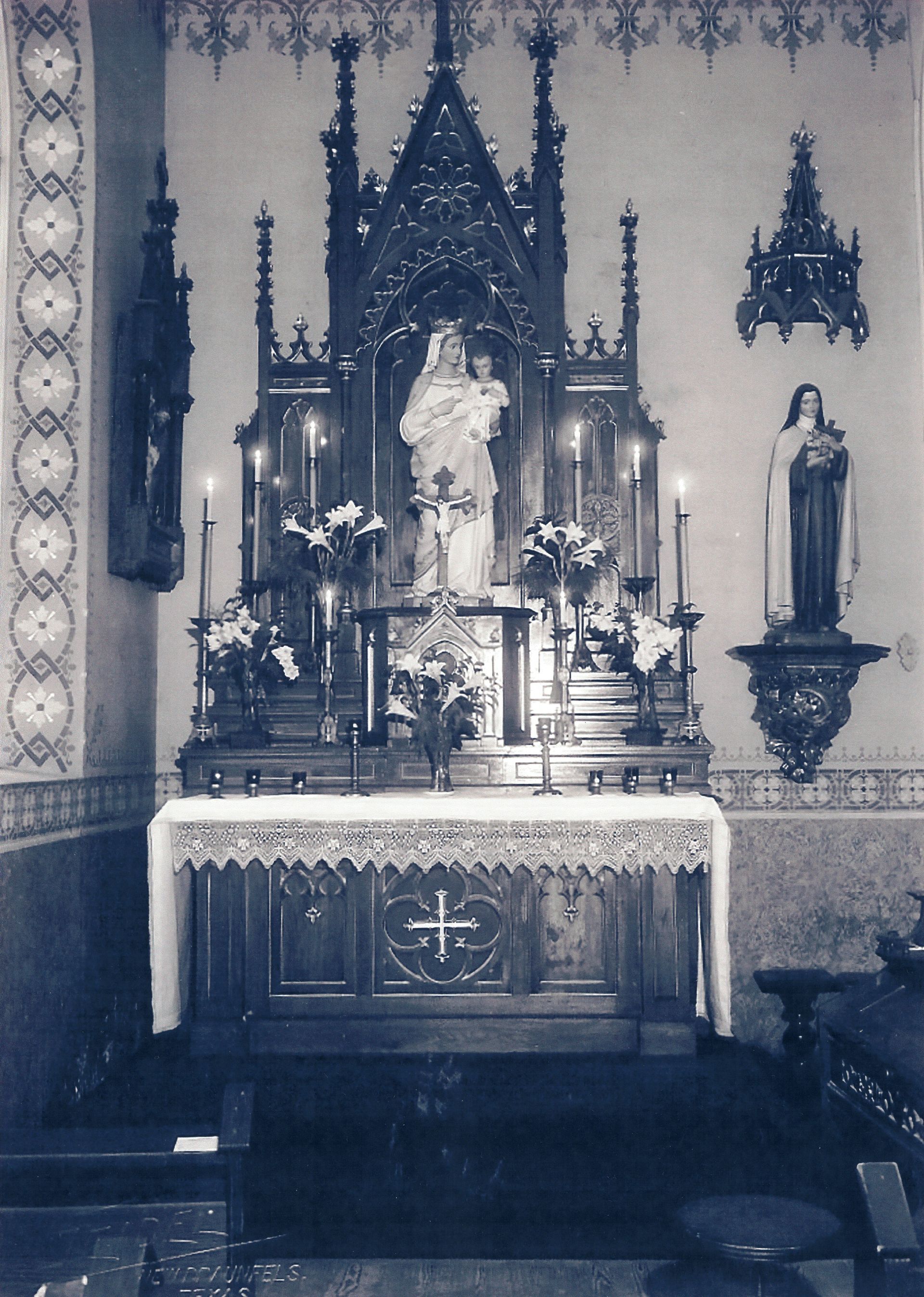
1921
This photo or our main altar was taken around 1921. You can see lots of the beautiful painted detailing that graced out church at this time. We still have the 4 large statues in the photo – two of them are in the foyer outside of St. Mary’s Hall and two of them are directly above those on the second floor. They were sold in the church parking lot in a garage sale by one of our pastors in the 1960s; the woman who purchased them, and some of the other items, graciously gave them back to the Parish Archives Committee who were able to see them all to complete restoration and use again within our parish.
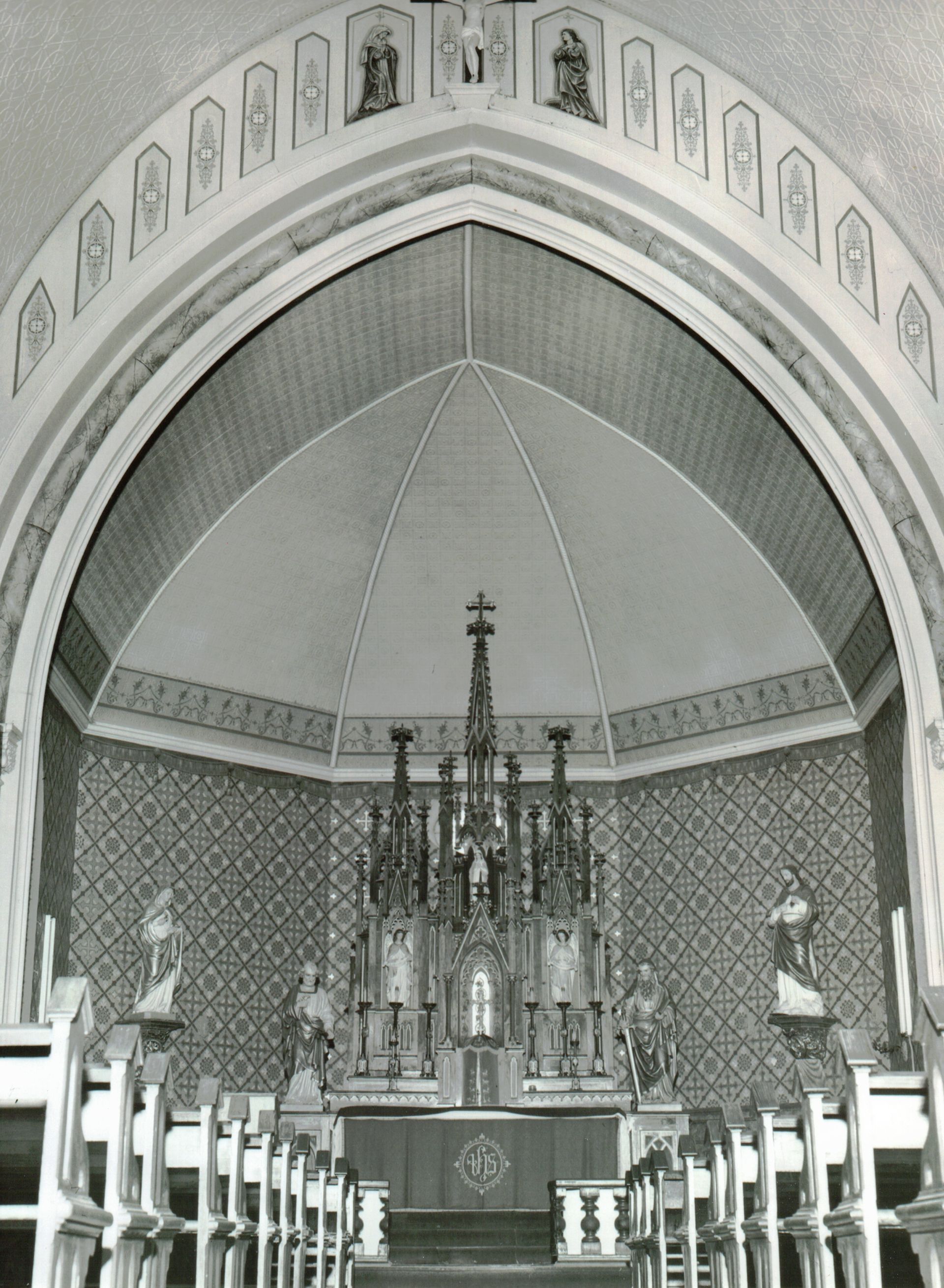
1921
This photo is from June 29, 1921, the day that Fr. JMJ Wack, our pastor, was named a Domestic Prelate. We also dedicated our grotto on this date (it is the Feast of St. Peter and St. Paul). Here you can see the round Eye of God window behind the altar. Note that at this time we were considered a painted church. Note also the elaborate wooden altar – this is the altar that was built in the late 1800s by renowned church altar maker, John Henry Sievers, who is the grandfather of our deacon, Fred Fey. One partial pew remains on our parish campus that matches that altar (he had made the altars and the pews); it is in the grotto wing foyer with a plaque describing its history.
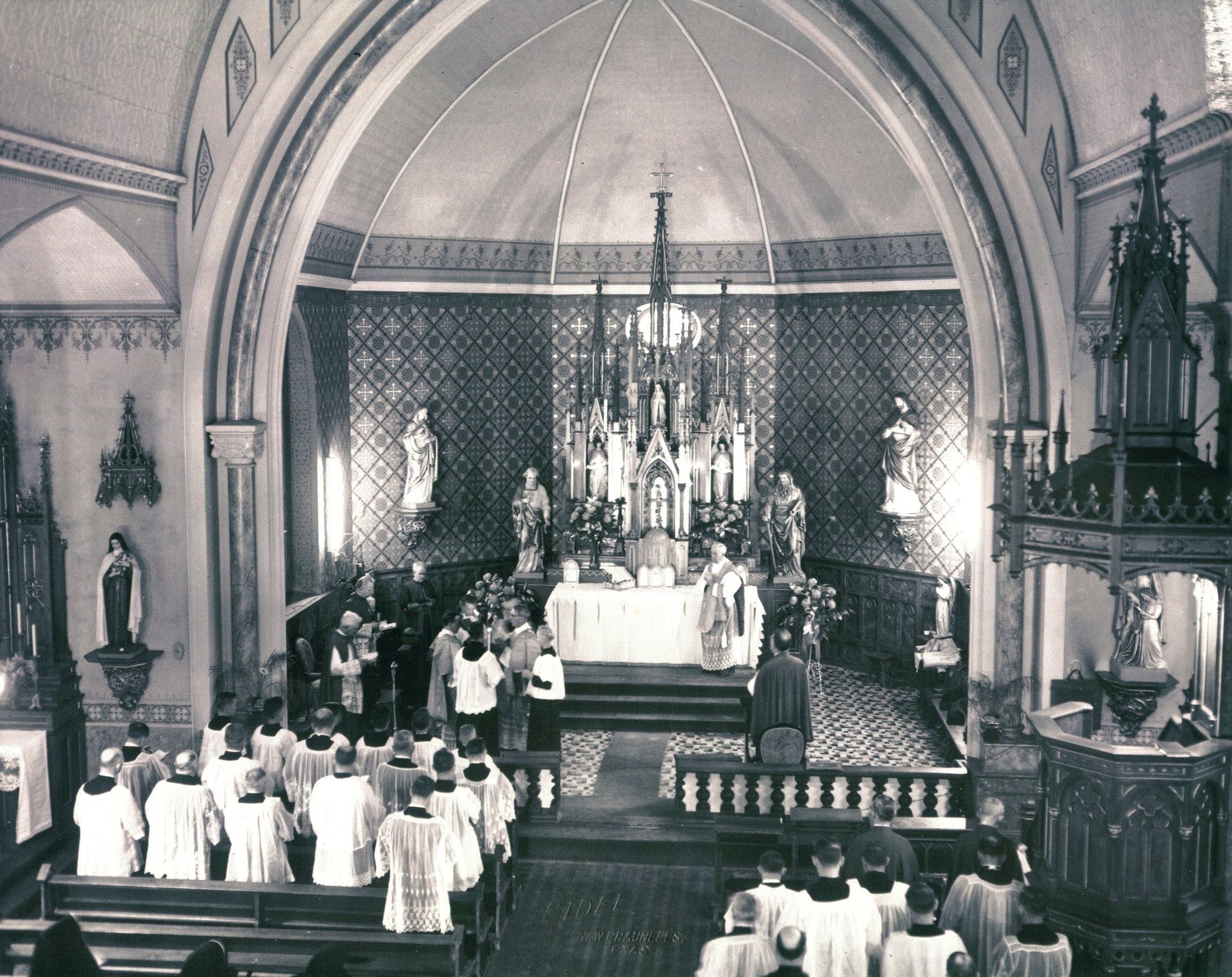
1917
This is our stone church in 1917. The stone church was originally built in 1871 (completed in 1874). It was built around the Black Walnut Church so that services would not be interrupted. When the stone church was completed, the walnut church was taken apart and hauled out board by board through the front doors of the new stone church so that the walnut wood could be sold at auction to the public in the parking lot of the church (this was reported in the Zeitung newspaper). Again you can see the little picket fence around the church and the oak tree. The stained glass windows are also visible.
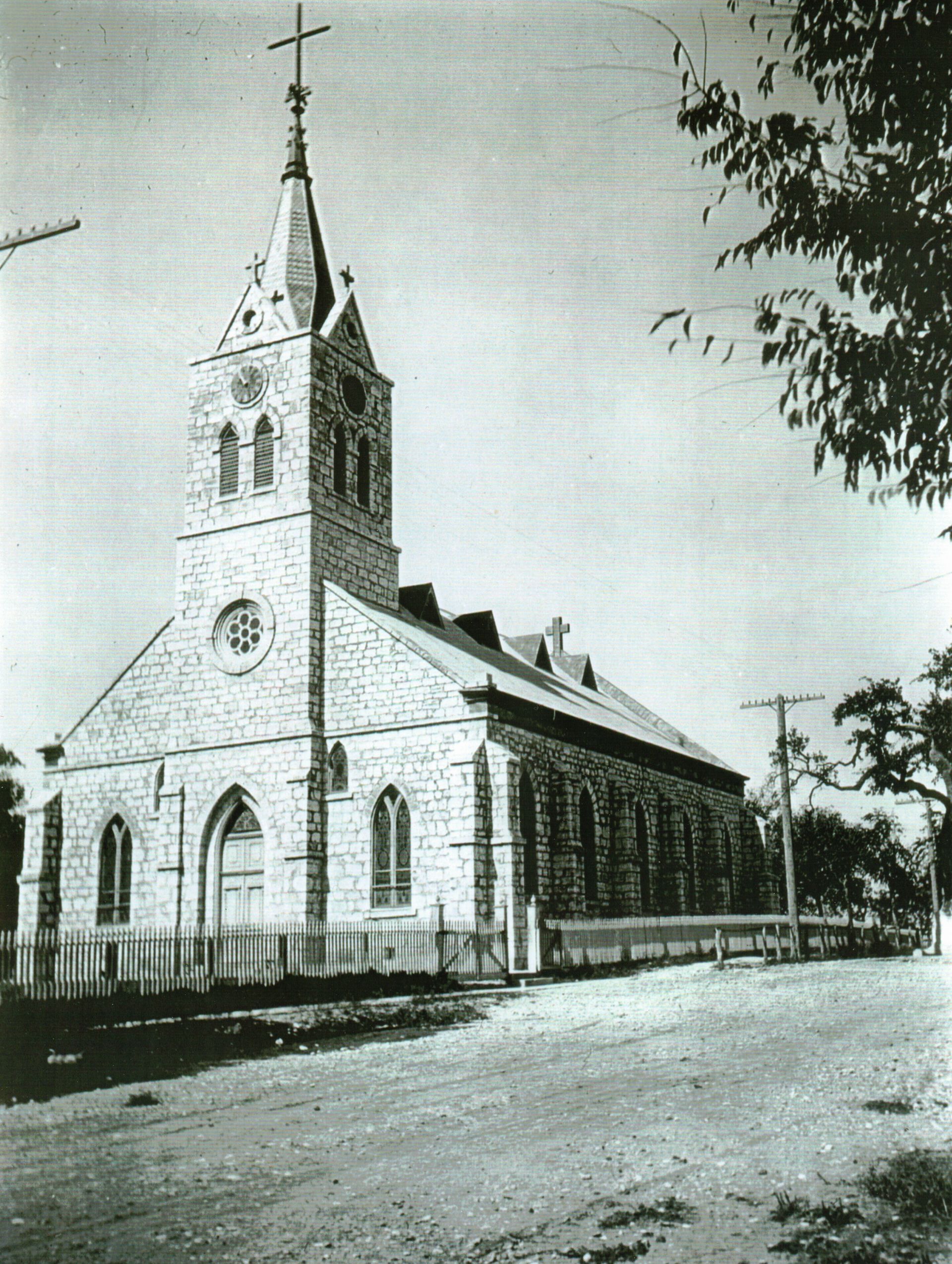
1901
This photo is of our church and the “Sisters’ School” in 1901. It was called the “Sisters’ School” because we needed a bigger school but could not afford to build it so the Congregation of Divine Providence Sisters who taught at our school built the school in 1900 with their own money, thus it was called the “Sisters’ School.” The school had to be enlarged in its second year to accommodate more students! Note the water well in the church parking lot.

1890
This is our stone church in 1890 with its beautiful rounded back space that contained the altar inside. Also note the large ball on the top of the steeple below the cross. We use that to help us date photos – it blew off in a hurricane and was not replaced. Also, note the picket fence around the perimeter of the church and the stained window on the curved section. You can also see the small round window on the very center of the curved section – that was the “Eye of God” window that could be seen from the inside of the church. You can also see the oak tree next to the church – certainly not the majestic oak it is today.
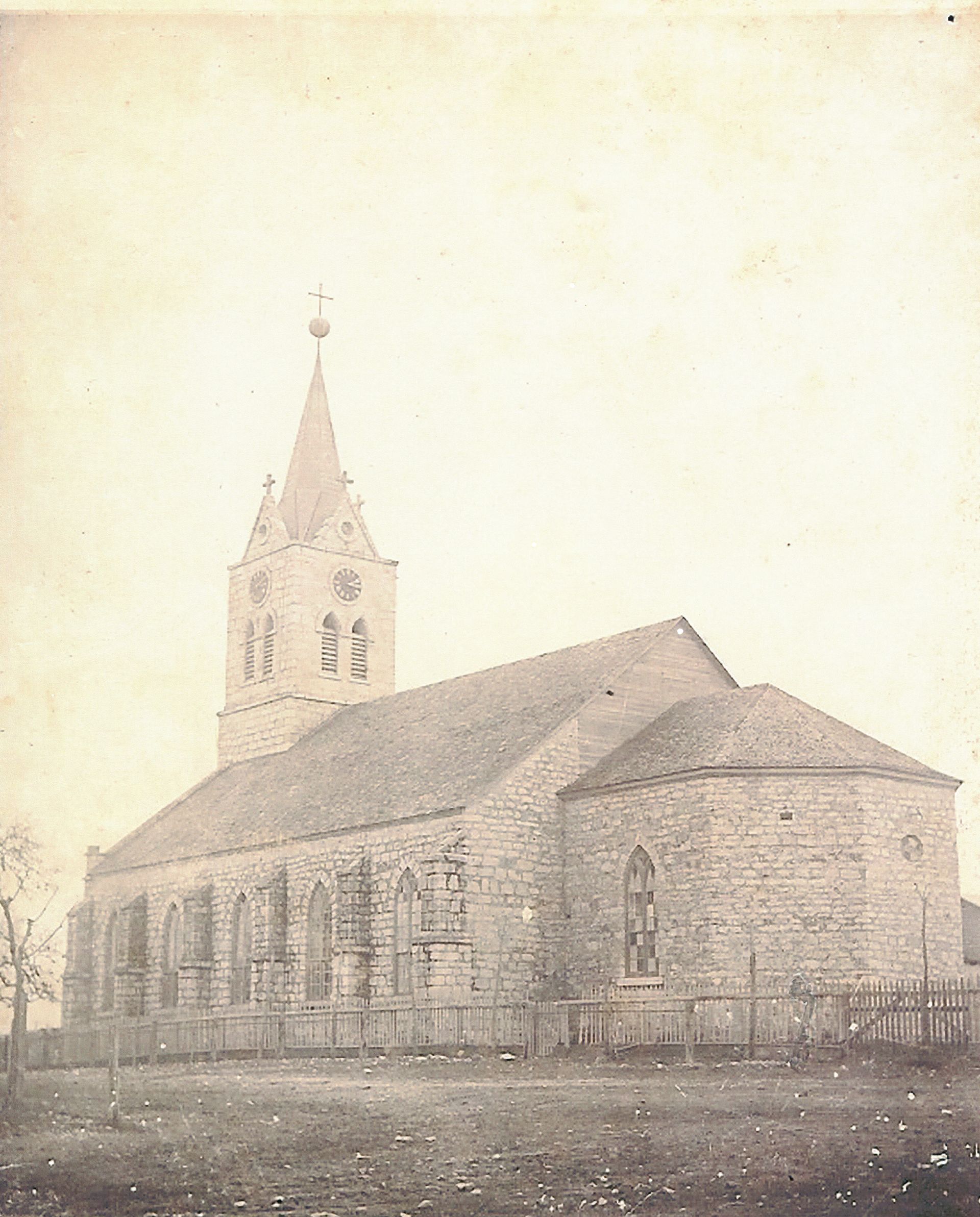
1849
Our Black Walnut Church, dedicated on September 9, 1849, served our ancestors until 1871 when the first stone church was built. Prior to this walnut church we held Mass in parishioners’ homes and then in 1847 built a small crude hut of wood on the corner of Castell St. and Bridge St. but that the bishop deemed not adequate for continued use. The walnut church measured 25’ by 35’. To get a feel for that size, you can stand inside our current church just in front of the choir loft; connect a line to form a square between the four hanging light fixtures right in front of the loft and that is approximately the size of the walnut church.
